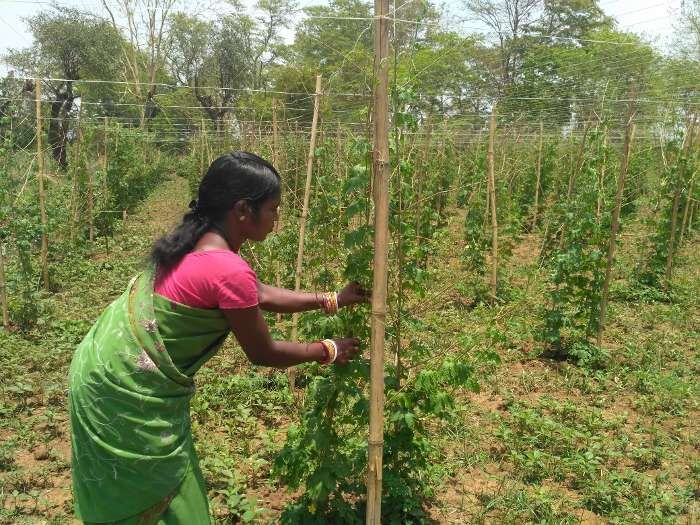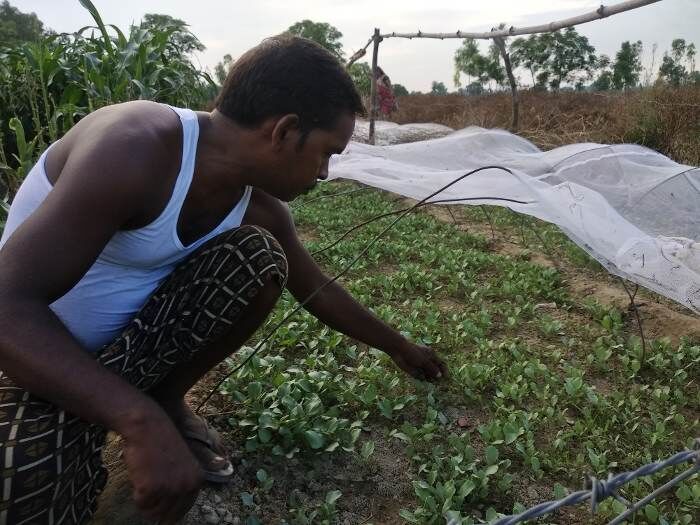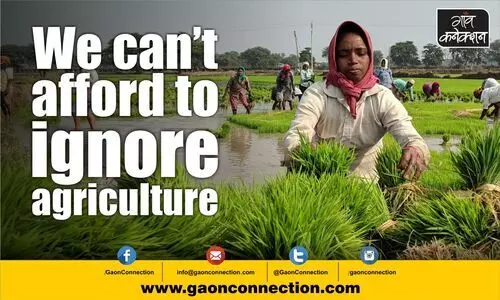Let me be very blunt from the onset that rural India
— Bharat — and agriculture seem to be the stepchildren of the development
model being followed since long. The narrative being peddled by the urban
economic “pundits” and the Ivy League “babus”, which was and is being seconded
by the policymakers is that the best way forward is to take the agriculture labour out of the villages, and into the cities. But, the million-dollar
question is that from where will you bring so many jobs, and where will you put
these mammoth labour numbers in the already overburdened cities.
A very good example of my argument is
that at the onset of Modi-I government, National Skills Development Council
(NSDC) had “naively” estimated that 18% of India’s workforce would be employed
in agriculture by 2022—compared to 56% in 2014—which was scaled down that
“prudently” to a target to 38% in 2017. I am sure the numbers still won’t be
anywhere near the 38% target, they will be far more by 2022.
Prof Ramesh Chand, the member
of NITI Aayog, a very respected agri-economist, had done a study in 2017, which
categorically among other measures, highlighted that India could double “real”
farmer incomes by 2022, if we shift cultivators to non- farm and subsidiary
activities. According to the study, if the number of farmers keeps declining as
they did during 2004-05 to 2011-12, their numbers will reduce by 13.4% between
2015 and 2016 and 2022 and 2023. Thus the farm income will be distributed in
13.4% fewer farmers, thus increasing their incomes. Hence, take farmers out of
agriculture, reduce their numbers, and voila the farmer income doubles by 2022-2023,
vindicating Prime Minister Modi’s stand. It seems all fine on paper, but where
will these farmers go, and what will their families eat?

As per the results of the latest Agriculture
Census 2015-16, the average size of operational holdings in the country is 1.08 the hectare, and this is decreasing by the day as the total number of operational
holdings in the country have increased from 138 million in 2010-11 to 146
million in 2015-16 — an increase of 5.33%. Point being made is that the
operational holdings are getting fragmented by the day, which makes farming a less viable option for the small and marginal farmer (0-2 hectares)
constituting 86.21% of the total holdings in 2015-16 against 84.97% in 2010-11,
but this does not mean that everybody is made to shun farming as an occupation
and migrate to cities, which are already bursting at the seams
vis a vis their carrying capacity; not if the goal is to provide cheap labour to
the urbanites. Instead, a more plausible and rational
way out seems, that the government creates MSMEs around rural clusters, which could
give employment to the rural labour and ensure that the people into farming
also gets a “respectable” minimum monthly income through Direct Benefit
Transfer and by ensuring Minimum Support Prices.
The disbursal of direct income to
farmers have already started through PM-KISAN scheme, and at best, would need to
be fine-tuned, which every delivery mechanism demands. According to news reports,
so far, states have submitted data of 7.4 crore farmers, of which 5.5 crore
have been validated by the Centre and the remaining are under different stages
of the verification process.
The feedback received from the farmers
is that the amount of Rs 6,000/year will have to be increased to a respectable level for #PMKISAN to make a
dent. Such decisions are for the government to take. The Center also needs to
create a robust procurement mechanism. The PM-AASHA scheme, under which States
could go in for traditional mechanism of procurement i.e. buy directly from
farmers at MSP’s, or go in for “price deficiency” payments i.e. to pay the difference
between the model mandi prices and the MSP’s to the farmers, or opt for a pilot
project under which private players were supposed to be brought in for
procurement failed miserably. There was no mandi, where the prices were not
ruling below state-mandated MSP’s. To remedy this failure, the Center and the state
governments have to work in tandem, with the Center showing the will, and the state
taking up the responsibility of implementation.labour out

Last but not least, the government
has to ensure that every farmer gets a fair share of the price which is being
paid by the consumers for his produce. The most important facet in ensuring that the farmer gets a fair price
for his crop is to increase the number of agri-markets in the country, which as on 31.03.2017, stood at a paltry 6630 Agriculture
Produce Marketing Committee (APMC) markets with an average geographical area
served by each APMC to be 496 sq. km. According to noted agriculture expert
Devinder Sharma, there is a requirement of 42,000 mandis needed within a radius
of five km. That said, it was announced in the 2018 budget that Modi-I government
would develop and upgrade existing 22,000 rural haats into Gramin Agricultural
Markets (GrAMs), and electronically link them to e-NAM, which will provide
farmers facility to make direct sale to consumers and bulk purchasers. The good
news is that after a year of announcing
the plan to set up 22,000 rural markets, on February 2019 the government
approved Rs 2,000-crore fund, namely Agri-Market Infrastructure Fund with
Nabard, in which Gramin Agricultural Markets (GrAMs), will be eligible to avail a loan from this fund at cheaper interest rates to create the necessary
facilities in their individual market complexes.
The bad news is that the speed to
upgrade these Rural Haats into Gramin Agricultural Markets (GrAMs)
has been extremely slow, as on 24th June 2019,
works of only 329 Rural Haats have been completed and works of 532 Rural Haats
are ongoing as per the information of the Ministry of Rural Development. Last
but not the least, this government must be work in tandem with the state governments
to ensure that these Gramin Agricultural Markets (GrAMs) are up and running at
their full potential, lest they fall to political squabbles, and would serve no
purpose.
Ramandeep
Singh Mann is an agriculture expert.
(Views
are personal)
Read Also: These women have acquired the skill of Organic Farming, no longer need to buy pesticides
Read Also: Zero budget farming is a long shot. Need to implement minimum budget farming first: Experts
Read Also: To beat the ill effects of climate change, farmers are going back in time




















